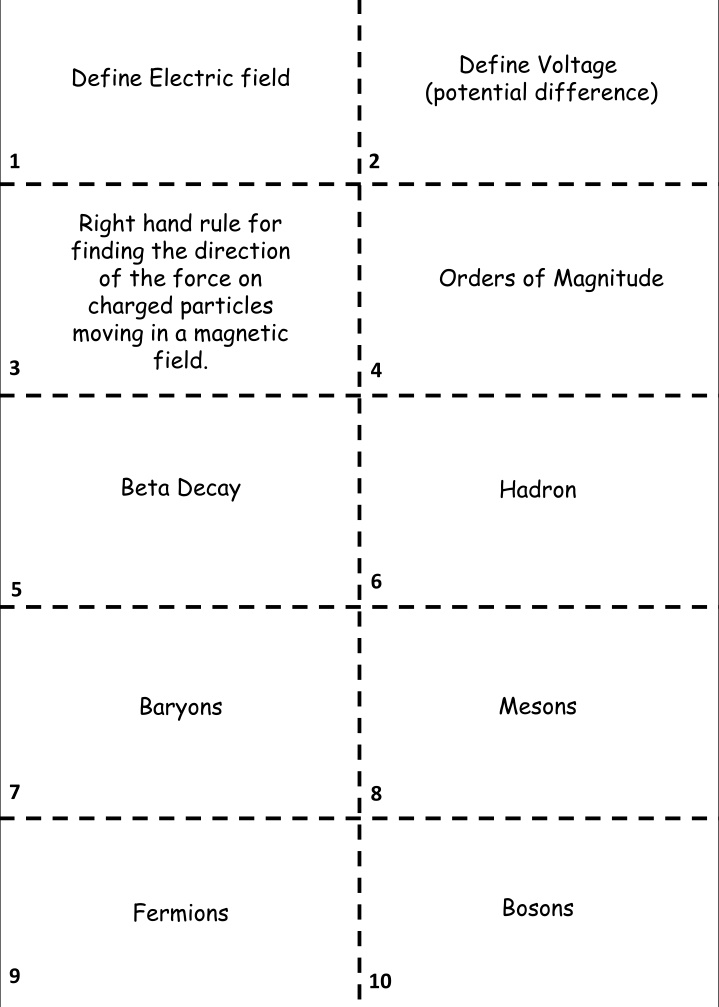
Exploring Concepts in Physics: Voltage, Electric Fields, and Particle Forces
Understand the fundamental principles of voltage, electric fields, and the behavior of charged particles in magnetic fields in this comprehensive exploration of physics concepts. Dive into topics like nuclear reactions, electromagnetic forces, and wave-particle duality, presented in an informative and engaging manner.
Download Presentation

Please find below an Image/Link to download the presentation.
The content on the website is provided AS IS for your information and personal use only. It may not be sold, licensed, or shared on other websites without obtaining consent from the author. If you encounter any issues during the download, it is possible that the publisher has removed the file from their server.
You are allowed to download the files provided on this website for personal or commercial use, subject to the condition that they are used lawfully. All files are the property of their respective owners.
The content on the website is provided AS IS for your information and personal use only. It may not be sold, licensed, or shared on other websites without obtaining consent from the author.
E N D
Presentation Transcript
Define Voltage (potential difference) Define Electric field 1 2 Right hand rule for finding the direction of the force on charged particles moving in a magnetic field. Orders of Magnitude 3 4 Beta Decay Hadron 6 5 Mesons Baryons 7 8 Bosons Fermions 9 10
A region where a charged particle experiences a force. V = W / Q Work done per coulomb of charge. First finger = Direction of magnetic field (N to S) Middle finger = direction of electron current. Thumb = direction of the force on the particle. 1x103 is 3 orders of magnitude smaller than 2.4x106 Composite particle consisting of quarks. This was the first evidence for the neutrino Hadrons consisting of quark anti-quark pairs Hadrons consisting of 3 quarks These are the force mediating particles. Photons (electromagnetic force), W and Z bosons (weak nuclear force), gluons (strong nuclear force) & Higgs boson. These are the matter particles. Consisting of quarks (Six types: up, down, charm, strange, top, bottom) and leptons (electron, muon and tau, together with their neutrinos).
Nuclear fusion reactors E = mc2 11 12 Irradiance Point source of light 14 13 Threshold frequency Photoelectric effect 16 15 Ek = hf hf0 Work function 18 17 Coherent waves Interference 20 19
In nuclear fission and fusion reactions mass is lost. This lost mass is converted into energy Require charged particles at very high temperature (plasma) which have to be contained by magnetic fields. A source of light coming from a single point and giving off light in all directions e.g. small light bulb or a distant star. Power per unit area I = P / A I = k/d2 for a point source. I1 d12 = I2 d22 This is evidence for the particle model of light. Photons of a sufficient energy can eject electrons from the surface of a material (photoemission). Minimum frequency of a photon required for photoemission. Electron kinetic energy = energy of photon - work function Minimum energy of photon required for photoemission. Waves that have the same frequency and constant phase difference This is evidence for the wave model of light
Constructive Interference Destructive interference 21 22 Diffraction grating formula m = d sin Bohr model of the atom - Ground state 24 23 Bohr model of the atom Ionisation level Emission spectrum 26 25 Fraunhofer lines Absorption spectrum 28 27 Absolute Refractive Index Snell s Law 30 29
Occurs when 2 waves with a phase difference of an integer multiple of wavelengths meet and combine. Path difference = (m+1/2) Occurs when 2 waves with a phase difference of an integer multiple of wavelengths meet and combine. Path difference = m m = order of maximum = wavelength of source d = distance between slits = angle from the central (zero order) maximum The lowest energy level an electron can be in. This corresponds to the level closest to the nucleus. Range of frequencies emitted when electrons fall to lower energy levels. Each element has a unique emission spectrum. The energy level an electron is in when it has zero potential energy and can escape from the atom. Range of frequencies absorbed when electrons rise to higher energy levels. Each element has a unique absorption spectrum. Absorption lines in the spectrum of sunlight. These give evidence for the composition of the sun s outer atmosphere The ratio of the speed of light in a vacuum to the speed of light in a medium.
Refractive index and frequency relationship Critical Angle 31 32 Relationship between refractive index and critical angle Total internal reflection 34 33 Electric field patterns for pairs of point charges. Electric field patterns for single point charges. 36 35 Electric field pattern between two charged parallel plates. 38 37 40 39
The angle of incidence when the angle of refraction is equal to 90 degrees. Refractive index of a medium increases as the frequency of incident radiation increases. This occurs whenever the angle of incidence is greater than the critical angle.






















